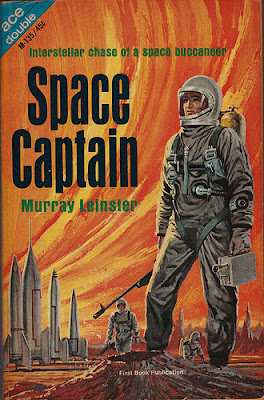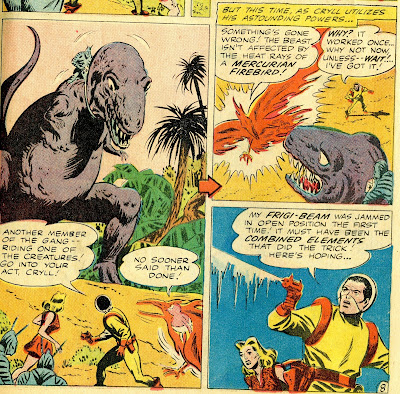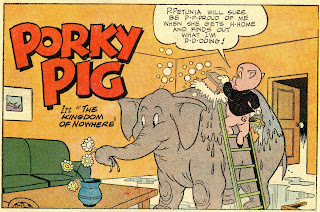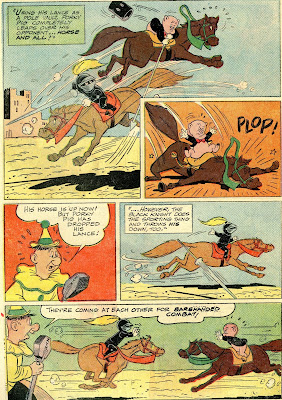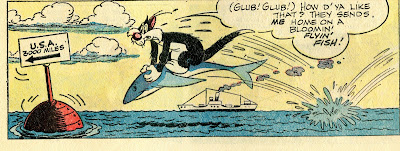 |
| cover-dated January 1979 |
Other licensed titles--such as The Transformers and G.I. Joe--were eventually reprinted by other companies. But these titles had little or no interaction with the regular Marvel Universe. Micronauts, along with ROM Space Knight, were tossed right into Marvel Earth and so often interacted with superheroes. I'm presuming that this means allowing another company to reprint them would be verboten.

Anyway, I learned that the first 12 issues of The Micronauts make up what has been described by fans as an epic space opera. Combine this with being written by Bill Mantlo (who regularly produced strong, fun stories) and with Marvel's success in constructing strong, coherent universes for toy lines, and I decided to search out affordable copies via Ebay.
I've just read the first three issues and I could not be more impressed with the quality of the world-building that Mantlo and artist Michael Golden achieve. The story picks up in a sub-atomic universe on the world of Homeworld, inhabited by a human-looking species. (And I'm just going to be referring to them as humans from now on.)
The planet's ruling class has been overthrown, with only Princess Mari and her brother Argon escaping. We soon learn that pretty much the entire population has turned against them. Not because they were bad rulers, but because a scientist now known as Baron Karza has found a way to regenerate cells and guarantee immortality. All he wants in exchange for this is complete sovereignty over the entire planet.
Heck, over the entire microverse. His soldiers are from another nearby planet ruled by Prince Shaitan. The former ruler of that planet, Acroyear, is currently a prisoner on Homeworld, along with an insectoid alien simply known as Bug.
Prince Argon is soon captured and taken to Karza's Body Bank for to be experimented on. In the meantime, an astronaut named Rann returns to Homeworld after a 1000-year-long exploration of the microverse. Rann was telepathically controlling his ship while in suspended animation, accompanied by a robot named Biotron. As soon as he lands, Karza has him zapped unconscious and tossed into a dungeon.
This is a lot of information, isn't it? But it's all expertly presented to us, with the exposition mixed in with the action so that the story always moves along at a strong pace. I like Golden's art throughout--his style gives the setting a subtle alien feel, always reminding us that this isn't Earth. Character designs, while based on the toy line of course, are given more detail and personality.
Anyway, the main protagonists (which also include another robot) meet in a sort-of gladiator ring, fighting a whopping big tank. With the help of a mysterious being who calls himself "Time Traveler," they manage to wreck the tank. They run for Rann's ship and flee the planet. Time Traveler tears a rift in a space wall that normally marks the borders of the microverse, allowing them to literally escape to another universe. But the rift in the wall is still there, allowing Prince Shaitan to pursue them in a powerful battle cruiser.
It's a great first issue. We are given the necessary information needed to grasp a complicated back-story, helped along by a character summary that's also included. (That's what I've posted at the top of this entry.) The various characters are given distinct personalities, with Rann and his crew hitting just the right "Ragtag Team of Misfits" vibe to make them fun. It is a fine example of skilled world-building, perhaps the most sophisticated of all the various universes Marvel built out of toy lines and other licensed properties. The balance between dealing with some dark social/political themes AND keeping the overall adventurous feel of the book high is remarkable.
Next week, we'll look at the 2nd and 3rd issues, which brings the action to Earth. Then, every two or three weeks, we'll continue to go through issues 4-12, probably in three-issue batches. I'll space them out like that so that anyone not interested in tiny aliens visiting Earth won't have to wait too long for something else to come along. Though, really, if you aren't interested in tiny aliens visiting Earth, then I don't know what can be done about you anyways.






















